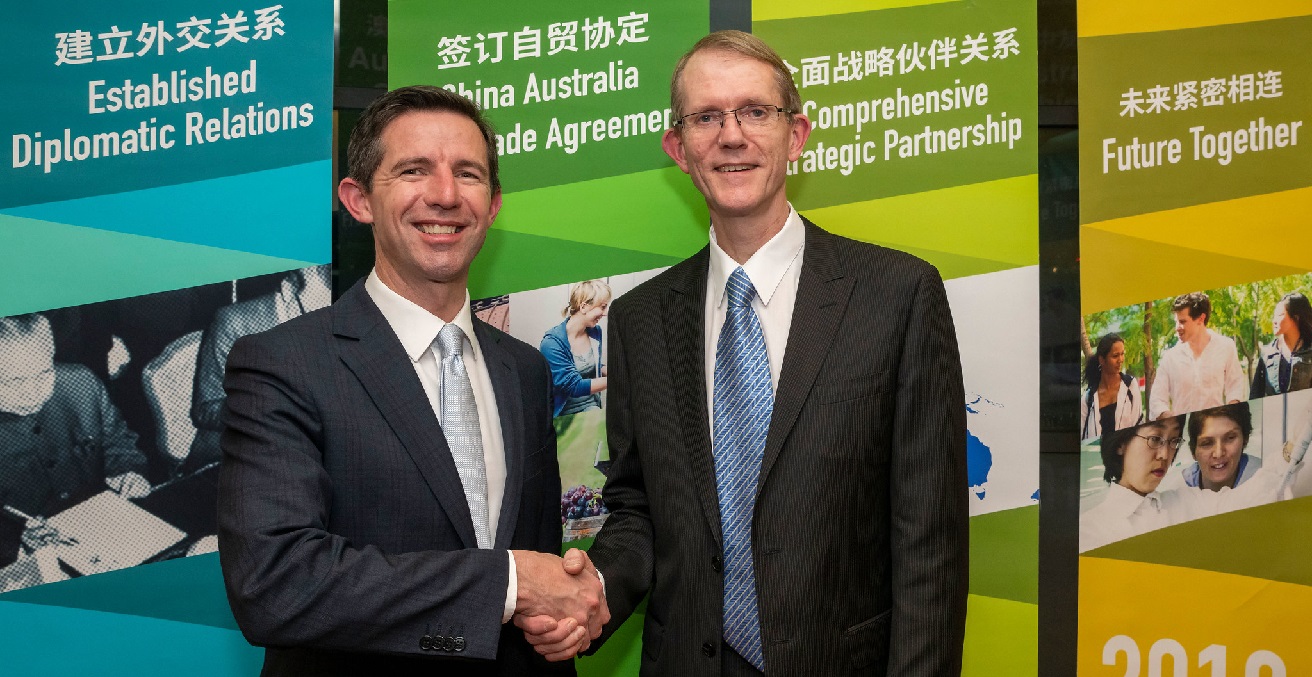Whither Australia-China Trade?

The Australia-China trade relationship is currently under significant strain. In the long run, increased protectionism would not improve Australia’s economic welfare.
In light of the COVID-19, disruption to supply chains, calls are being made for Australian industries to become more self-sufficient, which implies protection against Chinese imports. Protectionist measures would stymie economic gains to be had from continuing to pursue trade opportunities that accord with Australia’s comparative advantages. The COVID-19 crisis also raises the important question of how much will China’s earlier economic recovery assist Australia’s recovery in light of China’s status as Australia’s single largest trading partner.
Australia-China Trade and the Macroeconomy
China is well in front as Australia’s number one trading partner, accounting in 2018-19 for around 26 percent of total two-way trade. Japan is second at 10 percent, and the US third at 9 percent. Breaking down that two-way China trade, goods and services account for 33 percent of Australia’s total exports and 19 percent of total imports.
Is this share disproportionately large? If so, relative to what? In terms of relativities, consider Canada’s trade situation. Canada is an Asia-Pacific mid-sized economy roughly comparable to Australia in terms of level of development and has a strong trade relationship with the United States, a regional and global economic superpower. Two-way trade between Canada and the US accounts for 75 percent of Canada’s total two-way trade, some three times more than Australia-China two-way trade. Meanwhile, Canada’s two-way trade with China is a mere 5 percent of its total trade. By Canada’s standard, there is nothing unusual about the scale of Australia’s trade with a proximate economic superpower, especially given its complementary nature. Indeed, it’s what David Ricardo’s classic theory of comparative advantage would predict.
What then of the macroeconomic significance of Australia’s trade with China? While dynamic economic gains arise from increased specialisation in production and expanded international trade, these gains accrue over the longer term. Many commentators are wont to say Australia’s short-term macroeconomic performance is also inextricably linked to China’s. But the claim that the Australian economy’s quarterly GDP performance is essentially “Made in China” is exaggerated. While China may account for 33 percent of the country’s exports, Australia’s exports in total account for 22 percent of its GDP. China therefore only directly affects around 7 percent of Australia’s aggregate demand via the export channel.
Australia’s 22 percent ratio of exports to GDP is relatively low by the standards of comparably sized economies and suggests that considerable potential exists for Australia to trade more internationally, not only with China, but with other large regional economies such as India and Indonesia. Australia’s relatively high cost structure that constrains lifting international competitiveness in sectors such as manufacturing will limit increased internationalisation of the Australian economy.
Australia-China Trade at the Industry Level
Quite a different story about China’s impact on the economy can be told at the disaggregated industry level. China’s seven percent contribution to aggregate expenditure in the economy reflects substantially increased exports since the turn of the century in just a few sectors, notably mining (predominantly iron ore, coal and natural gas), tourism, and education services.
COVID-19 restrictions are not materially affecting mining exports to China, but this sector is unlikely to receive the sustained boost it did during the 2008 Global Financial Crisis (GFC) when China ramped up its infrastructure spending. While China has pumped funds into banks and local governments in response to COVID-19, this response has been substantially less than during the GFC, as the GFC left a legacy of high local government debt that authorities are still grappling with.
In contrast to mining, Australia’s indefinite health and associated travel restrictions have effectively stopped export earnings from China-related tourism and education in its tracks. An earlier Chinese post-crisis economic recovery will obviously not assist these sectors’ recovery while travel restrictions stay in place.
The Highly Uncertain Future
The level of global economic uncertainty at present far exceeds the uncertainty experienced during the GFC, with predictions about future economic performance highly conditional on how economies perform as health and travel restrictions are lifted, and of course about whether virus outbreaks will recur. The International Monetary Fund forecasts Asia as a whole will record zero economic growth for the first time in 60 years, which is above the expected negative growth outcomes for the other major regions of the world. While China, which has emerged earlier from the crisis, is predicted to grow at 1.2 percent, this will be of limited benefit to Australia.
Erecting protectionist trade barriers against Chinese imports in the name of increasing Australia’s future self-sufficiency in the wake of COVID-19 would not improve Australia’s economic welfare either. On the contrary, such measures would simply hinder economic gains to be had from continuing to pursue trade opportunities that accord with Australia’s comparative advantages.
Conclusion
Finance theory recommends diversifying investment portfolios to minimise total risk. Applying that principle in this context suggests a more diversified set of trading partners would minimise the risk of over-exposure to any one country. Comparative advantage and trade diversification are not necessarily incompatible when large economies growing faster than Australia are expanding their international economic footprints.
Combined, these classic principles suggest Australia should continue to pursue trade with China, yet simultaneously explore trade opportunities with other large countries where trade complementarities exist, India and Indonesia being the most obvious regional examples.
Tony Makin is Professor of Economics at Griffith University and has previously taught at the University of Queensland, the Lee Kuan Yew School of Public Policy at the National University of Singapore, and in the Australia and New Zealand School of Government (ANZSOG) program. His field of expertise is international macroeconomics and public finance and he has previously served as an economist with the International Monetary Fund and in the Australian federal departments of Finance, Foreign Affairs and Trade, The Treasury and Prime Minister and Cabinet. He has also been Director of the APEC Study Centre at Griffith University, and Australian convener of the structural issues group of the Pacific Economic Cooperation Council (PECC).
This article is published under a Creative Commons License and may be republished with attribution.





